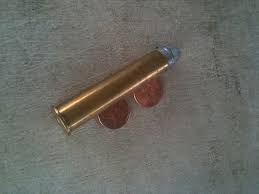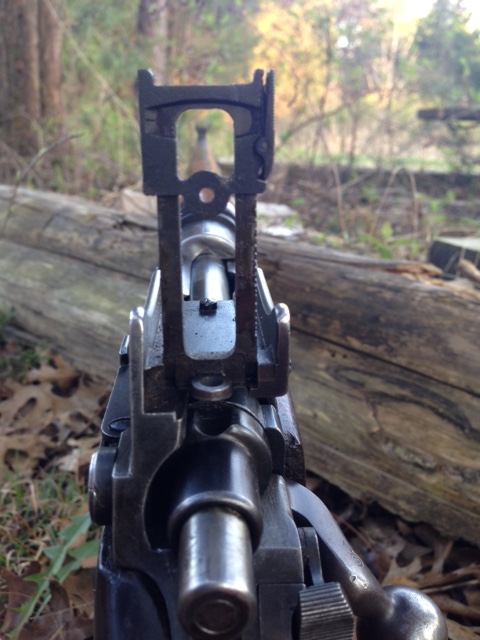The three basic tasks of the rifleman are: Target Identification, Range Estimation, and Firing the Shot. Today, we will discuss range estimation; specifically, using the mil dot system.
The milliradian is a system of angular measurement which represents a 1 to 1000 ratio. In order to use milliradians for target ranging, we must accurately know the size of the object we are looking at, and how many milliradians it covers in our optic. If we know these two numbers, the math is simple. The formula is as follows:
Target size in meters x 1000 / measured milliradians = distance in meters
Most of us are familiar with the mil dot system as it is used in rifle scopes, but originally, the system was developed by the navy to calculate the distance to an enemy ship. It is therefore appropriate to use a naval example:
Captain America sees a Japanese battleship through his binoculars. Measuring it using the Mil Dot scale, he determines that it is 20 mills long. He knows that Yamato class battle ships are 256 M in length.
256 x 1000 / 20 = 12,800 meters
Captain America sets his guns for 12,800 meters, and engages the enemy ship.
In preparation for an upcoming unknown distance shoot that I will be hosting, I spent some time taking pictures through my rifle scope of a variety of targets at a variety of distances. This can serve as sort of textbook exercise for anyone wanting to gain more familiarity with the mil dot system.
Use the photos below to try for yourself. Answer key at the bottom.
If you prefer the English system, use this formula:
Target size in inches x 27.8 / milliradians = distance in yards.
The photos show three types of targets; IDPA, which are 46 cm w x 63 cm h cm, or 18.25″ x 24.75″ ( some of these are mounted horizontal in the photos),
PPC, 55.5 cm or 21.75″ wide (the blue part),
Appleseed Red Coat Target, 63 cm w x 46.5 cm h or 25″ x 46.5″
I originally planned to simply compare the distance calculations using milliradians, to the results from the laser range finder. However, this exercise showed the limitation of the laser range finder. I used a Leupold rx-100 rangefinder. Many of these targets simply could not be ranged at the distances I attempted, either because of interfering brush, or because the targets simply were too small to bounce a laser off of accurately.
It is also noteworthy that these targets were difficult to find, even though I knew where they were, and had placed bright- colored numbers on them. Target identification is the most difficult and most crucial of the rifleman’s tasks. If I can’t see it, I can’t shoot it (usually).
In some ways, this exercise is easier using the photos than peering through your scope, mostly because the image you are looking at is still, making it easy to count the number of mills that the target covers. This is much harder to do accurately when you have the movements of the rifle scope to contend with. On the other hand, you, sitting at your computer, have no sense of the terrain to let you know if your numbers are wildly wrong. When we hold the unknown distance shoot, all participants will be given a topographical map to aid their range estimation.
Finally, I did not get the camera mount on the scope perfect so some / most of these pictures appear canted. Also, the targets are sitting on un- level ground, so they cannot be milled straight across, but are at a slight angle. This will, of course, throw off the calculation; all par for the course.
Yellow 75 -87 M as ranged
PPC white 1 – this one ranged from 308 to 365 my calculation using mills is 347
Yellow 2- 156 M, 153 calculated
white 8- no laser reading, 252 calculated
Appleseed Redcoat- 662 M, 630 calculated
PPC through brush- no laser reading, 555M calculated
IDPA red- no laser reading 306M
IDPA blue Horizontal- no laser reading, 575
Green 1-253M, 242 calculated
Blue 12-177M, 180 calculated












